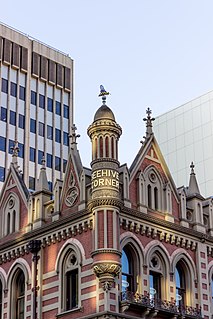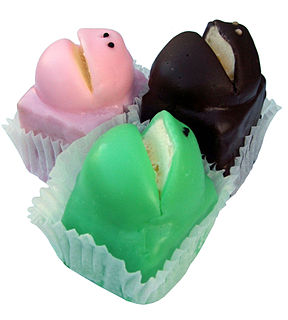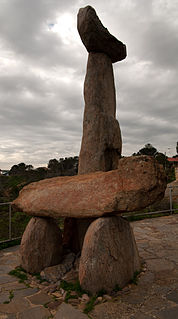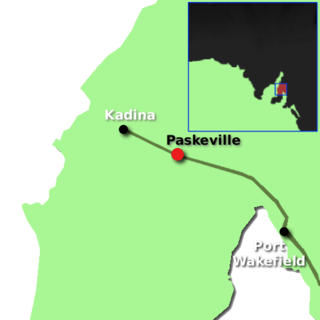 W
WThe culture of South Australia reflects the culture of Australia as a whole. The state has a variety of wine-producing regions including the popular tourist destination Barossa Valley. The majority of the population is focused in and around the Adelaide metropolitan area. The geographical landmass varies widely, and a significant portion of Adelaide's terrain is hilly. The Adelaide Hills features many European villages and small towns, which reflect the states immigration trends in the 1880s. Sport is integral to the Australian identity and South Australia is no exception. The state has the second highest rate of event attendance of all states and territories with 49% of South Australians aged 15 years and over attending a sporting event each year.
 W
WAdelaide Festival Centre, Australia's first multi-purpose arts centre and the home of South Australia's performing arts, was built in the 1970s, designed by Hassell Architects. The Festival Theatre opened in June 1973 with the rest of the centre following soon afterwards. The complex includes Festival Theatre, Dunstan Playhouse, Space Theatre and several gallery and function spaces. Located approximately 50 metres (160 ft) north of the corner of North Terrace and King William Road, lying near the banks of the River Torrens and adjacent to Elder Park, it is distinguished by its two white geometric dome roofs, and lies on a 45-degree angle to the city's grid.
 W
WBarossa German is a dialect of German, predominantly spoken in the Barossa Valley region of South Australia. The prominent South Australian writer, Colin Thiele (1920–2006), whose grandparents were German immigrants, referred to "Barossa-Deutsch" as: "that quaintly inbred and hybrid language evolved from a century of linguistic isolation". It takes its name from the Barossa Valley, where many German people settled during the 19th century. Some words from Barossa German have entered South Australian English.
 W
WThe Beehive Corner is a landmark in the Adelaide city centre, on the north-eastern corner of King William Street and Rundle Street, centrally placed between the railway station and the city's shopping precinct.
 W
WThe Capri Theatre is a heritage-listed cinema in Goodwood, a suburb of Adelaide, South Australia, built in the Art Deco style in 1941. It was formerly called the Goodwood Star, New Curzon, and Cinema Capri.
Farmers Union Iced Coffee is a flavoured milk drink popular in Australia, primarily the state of South Australia. It continues to be sold under the "Farmers Union" banner, originally a South Australian co-operative, subsequently the listed company National Foods, and then by a series of subsidiaries of the Japanese brewing company Kirin. The current manufacturer's company name is Bega Dairy & Drinks.
 W
WThe frog cake is an Australian dessert in the shape of a frog's head, composed of sponge cake and cream covered with fondant. It was created by the Balfours bakery in 1922, and soon became a popular treat in South Australia. Originally frog cakes were available exclusively in green, but later brown and pink were added to the range. Since then other variations have been developed, including seasonal varieties. The frog cake has been called "uniquely South Australian", and has been employed in promoting the state. In recognition of its cultural significance, in 2001 the frog cake was listed as a South Australian Heritage Icon by the National Trust of South Australia.
 W
WHolden Street Theatres (HST) is a South Australian performing arts theatre complex in Hindmarsh, an inner-western suburb of Adelaide. It is housed in the heritage-listed All Saints' Anglican Church complex. The complex includes three performance spaces: The Studio, The Arch and The Bar.
 W
WThe Kitchener bun is a type of sweet pastry made and sold in South Australia since 1915. It consists of a bun sometimes baked, sometimes fried, made from a sweet yeasted dough similar to that used for making doughnuts, split and then filled with raspberry or strawberry jam and cream, most often with a dusting of sugar on the top.
 W
WThe Mary MacKillop Interpretive Centre is located in Penola, South Australia. It is close to the two State Heritage sites of Petticoat Lane and the original stone schoolhouse developed by Mary MacKillop in conjunction with Father Julian Tenison Woods in the 19th century.
 W
WThe pie floater is an Australian dish particularly common in Adelaide. It consists of a meat pie in a thick pea soup, typically with the addition of tomato sauce. Believed to have been first created in the 1890s, the pie floater gained popularity as a meal sold by South Australian pie carts. In 2003, it was recognised as a South Australian Heritage Icon.
 W
WRundle Mall is a pedestrian street mall located in Adelaide, South Australia. It was opened as a pedestrian mall in September 1976 by closing the section of Rundle Street between King William Street and Pulteney Street, to vehicular traffic. The street continues as Rundle Street to the east and Hindley Street to the west.
 W
WSouth Australian Lotteries, is a lottery company that operates in the Australian state of South Australia. While the license to operate lotteries in South Australia is owned by the South Australian Government they in turn appointed Tatts Group Pty Ltd as the Master Agent and license holder. SA Lotteries operates under Tatts Group's master brand the Lott.
 W
WThe Thebarton Theatre is an entertainment venue located in the inner-western Adelaide suburb of Torrensville, South Australia. Its capacity is 2,000 people, with customisable seating, enabling to be arranged from "in the round", or with the seating partially or fully removed to make room for a dance floor. It is known as a music venue for both big international names and newly-established artists, as well as a range of other types of performance.
 W
WTjilbruke is an important creation ancestor for the Kaurna people of the Adelaide plains in the Australian state of South Australia. Tjilbruke was a Kaurna man, who appeared in Kaurna Dreaming dating back about 11,000 years. The Tjilbruke Dreaming Track or Tjilbruke Dreaming Trail is a major Dreaming trail, which connects sites from within metropolitan Adelaide southwards as far as Cape Jervis, some of which are Aboriginal sacred sites of great significance.
 W
WThe Western Desert cultural bloc or just Western Desert is a cultural region in central Australia covering about 600,000 square kilometres (230,000 sq mi), including the Gibson Desert, the Great Victoria Desert, the Great Sandy and Little Sandy Deserts in the Northern Territory, South Australia and Western Australia. The Western Desert cultural bloc can be said to stretch from the Nullarbor in the south to the Kimberley in the north, and from the Percival Lakes in the west through to the Pintupi lands in the Northern Territory.
 W
WThe South Australian wine industry is responsible for more than half the production of all Australian wine. South Australia has a vast diversity in geography and climate which allows the state to be able to produce a range of grape varieties–from the cool climate Riesling variety in the Clare Valley wine region to the big, full bodied Shiraz wines of the Barossa Valley.
 W
WThe Yorke Peninsula Field Days is a biennial, three-day field days event, held on a permanent site outside Paskeville on Yorke Peninsula, South Australia. The event has a major focus on agriculture. The event is the oldest field days event in Australia and one of the biggest, exhibiting millions of dollars' worth of farm machinery.